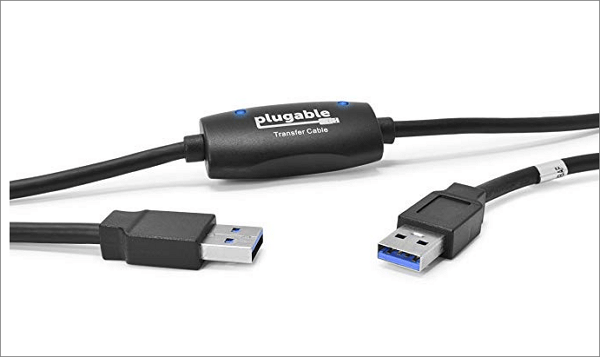You needs to put one of the computer in Target Disk Mode (Press T on startup) and connect another USB-C equipped Mac with a USB-C cable (or USB-C to USB Adapter / Cable for older computer) Note that the USB-C cable that come with your MacBook Pro 2016 does not work. We show how to connect an Android phone to a Mac using the free software Android File Transfer, then move photos and other files from one to the other. Into the Mac using a USB cable. Alternatively, you can transfer files for apps that support file sharing by connecting iPhone to a Mac (with a USB port and OS X 10.9 or later) or a Windows PC (with a USB port and Windows 7 or later). Open Android File Transfer. The next time that you connect your phone, it opens automatically. Unlock your phone. With a USB cable, connect your phone to your computer. On your phone, tap the 'Charging this device via USB' notification. Under 'Use USB for,' select File Transfer. An Android File Transfer.
Despite Windows and Mac being well-equipped operating system in itself, they aren’t compatible to each other. Let’s say, there isn’t any easy way out to transfer files from either of these computers. Many of you might be e-mailing files to yourself from one computer and restoring them onto other via that mail. Certainly, this is one hack to use when things aren’t falling on place. But before you transfer your data from Mac to PC this way, you should look up to other mediums that are more stable.
Using a USB device is one of the easiest ways to backup and/or transfer files. To copy files to a USB device, connect your USB flash drive or external hard drive to your computer, locate the file you want to copy, then drag the file to the USB device.
4 Easy Ways to Transfer Mac Files to Windows
Method 1: Transfer Data via Network
Even if you have distinct operating systems, you can use a common network to migrate files from them.
- Firstly, you’ll have to create and share a folder containing all those files. For this, create a folder on your desktop, right click it and select Share with>Specific people.
- Now if you can see your user name in it, click on Share and then on Continue If prompted, and then click Done.
- If you can’t see your user name in this dialogue box, then click on the dropdown and select the user. Now click on Share> Continue If prompted> Done.
- Now you’ll have to find your PC’s IP address. For this, click on Start and search for ‘cmd’. Next, select the CMD.exe from the search results.
- Next, it the command window type ipconfig and press Enter. You’ll find your PC’s IP address in a line labeled as IPv4 Address. Note down the address that will be used later.
- Now you’ll have to connect your computers to a common network.
- You can connect your Mac to the network by selecting Connect to Server from Go menu or by pressing Command+K, while Finder is open.
- Now type smb:// followed by your PC’s IP address.
- Click on Connect, thereafter you’ll be prompted to authenticate. Also, if you haven’t specified the shared folder, you’ll be asked to select one.
- Once all this is done, you need to locate files that are to be transferred and transfer them to your Mac.
Also Read: 10 Interesting Shortcut Keys on Windows Keyboard
Method 2: Transfer Files via Cloud
Cloud based file transfer is the second method to transfer data from Mac to Windows, on our list. For this, you’ll need an internet connect on both the computers and a common cloud based storage location, like One Drive, DropBox or Right Backup.
- You’ll have to start by logging in to these services and upload files on its storage.
- Next, log on to the same service with same ID.
- Now restore the file in your computer.
For example, if you want to transfer files from Windows PC to Mac; log on to your cloud service with Windows PC and upload file on it. Now log on with the same ID onto the same network and restore file on your Mac.
Method 3: Transfer Data via Cable Connection
Many of you might consider this as a complex process, until you’ve tried it. Sharing files from Windows to Mac using a cable is rather easy and time-saving.
- Firstly, you’ll have to create a folder on your Windows PC, containing all those files.
- Now, connect both the computers via an Ethernet cable. You’ll have to plug in both of its ends to both of your computers.
- Next, You’ll have to connect your Mac to the network by selecting Connect to Server from Go menu or by pressing Command+K, while Finder is open.
- Now type smb:// followed by your PC’s IP address.
- Click on Connect, thereafter you’ll be prompted to authenticate. Also, if you haven’t specified the shared folder, you’ll be asked to select one.
- Once all this is done, you need to locate files that are to be transferred and transfer them to your Mac
Method 4: Transfer Files via Removable Media
You can also transfer files from removable media such as, external hard drive, pen drive, CD, or DVD. In addition to transferring files, this method will also work as a backup alternative for you.
- You need to first insert your external drive and copy all files from your Windows PC to it. Also remember to eject the drive before plugging off, else your copied items may not appear in Mac
- Now insert the drive into your Mac and drag the data onto your Mac’s hard drive using Finder.
Note: For data transfer purposes, make sure your USB drive is formatted using Windows FAT32 filesystem. This will make the drive compatible to both the operating systems. Also, once you have copied all items to your Mac, do format it with Mac’s Disk Utility as Apple’s HFS+. With this, you’ll be able use the drive with Time Machine.
These are the 4 methods that you can use to transfer data from Windows to Mac. However, migrating files may take some time in some of the methods, depending upon the internet speed, number of files and size of files. Further, once you have copied files from one operating system to another, you can sort and organize them.
Responses
Knowing how to move files from Samsung to Mac can come handy if you’re a Mac user but with a Samsung Galaxy device. A lot of Mac owners ask us for a way to easily transfer their data from their Android to their computer so here it is. We hope you’ll find this helpful.
Move files from Samsung to Mac Method 1: Use Android File Transfer
The easiest way to move files from Samsung to Mac is by using Android File Transfer application. This is a special program that you must install on your Mac in order for it to have the right drivers to communicate with your Samsung Galaxy device. To get started, follow the steps below:
- Download Android File Transfer on your Mac.
- Open AndroidFileTransfer.dmg file.
- Drag Android File Transfer to Applications.
- Use the USB cable that came with your Android device and connect it to your Mac.
- Double click Android File Transfer.
- Browse the files and folders on your Android device and copy files.
- Once Android File Transfer has been successfully installed, connect your Samsung Galaxy device to your Mac using USB cable.
- Click Get started.
- Navigate through the directory to find the files you want on your Mac.
- Find the exact file and drag it to the desktop or your preferred folder.
- Open your file. You can only do this when its on the Mac.
- On your Samsung Galaxy device, make sure that you allow access to phone data when prompted. Then, pull down the status bar, tap USB for File transfer, and select Transferring files under Use USB for.
Once you’ve done all the steps above, you can now begin using your Galaxy device like a regular external hard drive that’s connected to your Mac. You can now start moving files between the two devices.
Move files from Samsung to Mac Method 2: Use Smart Switch
Another good way to move files from Samsung to Mac is by using Smart Switch. This is an official application built by Samsung to make it convenient to transfer photos, contacts, messages, and more between devices.
Before you try to use Smart Switch to move files from Samsung to Mac, you want to make sure that your computer is compatible. These are the minimum system requirements that must be met on your Mac:

- Operating System: Mac OS X® 10.6 or later.
- CPU: Intel Core 2 Duo 2.0 GHz or higher.
- RAM: 1GB or higher.
- Screen resolution: 1280 x 800.
- Android file transfer application installed on your computer.
If your Mac is compatible and met all the specified requirements above, follow these steps to install Smart Switch and transfer your data to your computer:
- Install Smart Switch on your Mac.
- After installing Smart Switch, connect your phone to your computer using USB cable.
- Make sure allow your Mac to access data on your Samsung Galaxy. You may need to unlock the connected phone, and then select USB file transfer to transfer files via USB.
- Open Smart Switch on your Mac.
- Select Backup.
- Wait for your Mac to finish creating a backup. This may take several minutes depending on the amount of data being moved.
- Once the screen shows that your backup has been created, select OK.
How to access folder of your backup
Unless you intentionally changed it, your Mac should save your backup in a default location. For Macs, this is usually where Samsung Smart Switch backup are stored:
/Users/[username]/Documents/Samsung/SmartSwitch/backup
Note: To quickly access the AppData folder, select Start. In the search bar, type appdata and press the Enter key.
File Transfer Through Usb For Mac Download

Move files from Samsung to Mac Method 3: Use third party apps
File Transfer Through Usb For Mac Windows 7

File Transfer Through Usb For Mac Os
If, for some reason, you don’t want the first two methods above in moving your files to your Mac, the other option would be to use third party apps. There are many applications that claim to work better in doing the job but frankly, we don’t recommend them. We haven’t actually used one yet and we can’t confirm if they are safe to use. If you want to take the risks and find out yourself, simply use Google to look for them. We have no idea how such applications behave after you install them on your computer so there’s always the chance of putting your Mac’s security and data at some degree of risk.
File Transfer Through Usb For Mac Windows 10
As much as possible, we suggest that you stick with the first two methods as they have proven to be reliable and safe for years now.

